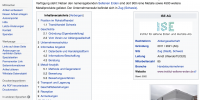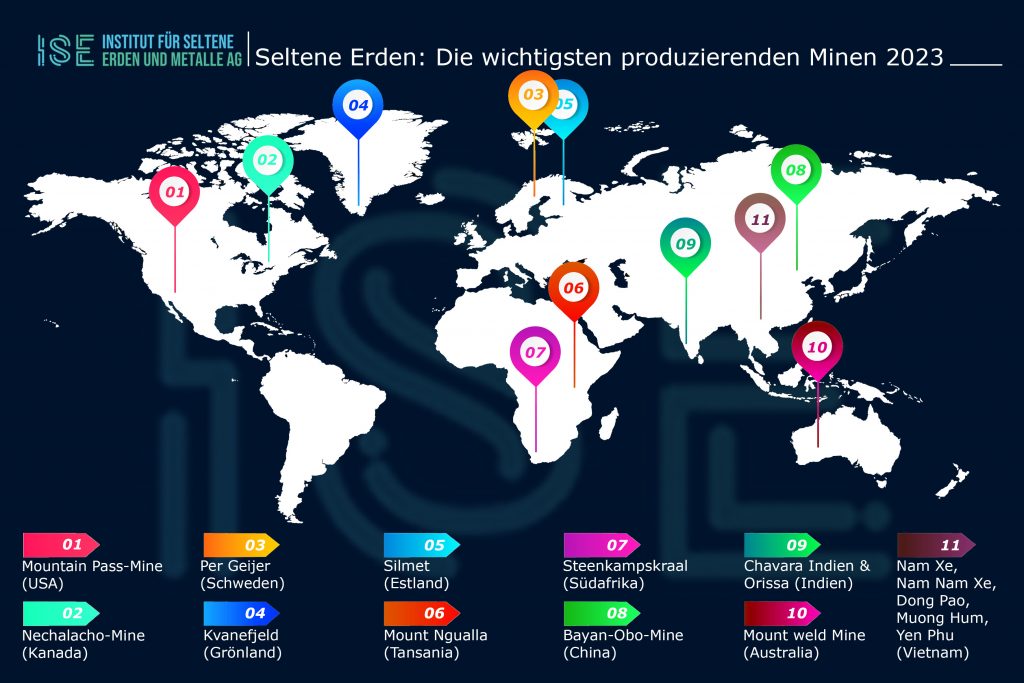
Alexander Gysi, Colorado School of Mines
Alex Gysi, Assistant Professor of Lithogeochemistry at the Colorado School of Mines Institute of Geology and Geotechnics, recently received the CAREER Award from the National Science Foundation to advance his work on rare earths.
His project "Rare Earth Separation (REE) Between Minerals and Aqueous Liquids in Mineral Deposits" will be funded with 577.485 USD over a five-year period.
Gysi joined 2014 at the Colorado School of Mines faculty in August. He holds a PhD in Geochemistry from the University of Iceland and a MS in Mineralogy and Petrology from ETH Zurich.
We asked Gysi about his research and discussed how this could help to better understand the interactions between rocks and ores in geological systems.
The research deals with rare earth elements (REE) - the lanthanoids as well as yttrium and scandium. These elements are interesting because they are considered critical metals. They are used in the high-tech and green technology industries, in permanent magnets, wind turbines, renewable energy, computers and cell phones. I'm trying to understand how these REE deposits form in geological systems. At the same time, we are trying to broaden the boundaries of basic research in this area so that we can read the signatures recorded in minerals from hydrothermal fluids. The crucial question is what the chemistry of minerals says about geological processes. "
Q: What attracts you most to your research?
A: “This research requires a lot of interdisciplinary work and has great potential for new discoveries. REE have been measured in rocks for many decades to describe the development of melts from the earth's mantle to the earth's crust. All assumed that liquids were present. In the crust, these signatures could not be altered, but when we started work on the REE deposits we found that the rocks are greatly altered and that fluids actually played a crucial role in the formation of these deposits. A snapshot of these crustal fluids and their minerals can be used to read what went on deeper in the crust in the geological past with elevated temperature and pressure. In historic mining areas, these are mostly made of quartz, but minerals such as calcite, apatite and fluorite are found in REE deposits. These minerals are exciting to study as they form in different geological environments. Even on the surface of the earth, in the ocean, etc. Some of them, such as B. apatite, are found in our bones and teeth, and their REE compositions are studied in medicine, for example to map body tissue.
“We grow these minerals in the laboratory and endow them with REE to see how they behave. Then we try to develop a new model to predict the meaning of these REE signatures in natural minerals. This is ambitious. ”We still have no way of quantifying the meaning of these REE signatures, and to my knowledge there aren't many people who grow these minerals from hydrothermal solutions at> 100 ° C - it's not easy, but it does Fun!
“My PhD student has just graduated and I have two new PhD students who are just starting this project. We are writing the first paper on the REE-doped calcite, which was synthesized at 200 degrees Celsius, and we are now the first research group that can create the model. Trace element variations recorded with geochemical modeling software in hydrothermal calcite. This work is new and the starting point for years of research. "
Q: What is the potential impact of this work?
A: “It touches a lot of different disciplines - materials science, chemistry, earth sciences, economic geology, petrology, etc. So I'm really excited about it - we try to bring different disciplines together and work on different levels. From the behavior of atoms in the laboratory and in models to hundreds of meters and kilometers in ore-forming geological environments - it's also interesting for the US because China produces most of the world's REE supply - China controls over 90-95 percent of that worldwide REE market. Recently in North America, including Canada and the United States, we've been putting more thought into these natural resources. In the US, we currently have a mine in Mountain Pass, California that has opened and then closed and now reopened other potential mines like Bear Lodge in Wyoming.
“As we begin mining and exploring more deposits in the US, our research may provide the basic framework for understanding where these deposits form, how to explore them, and how to characterize them. To give you an analogy, the exploration and mining industry for metals like copper, lead, zinc, silver and gold is currently inside a Formula 1 car and draws on years of research in the area by many groups worldwide during the REE -Industry is sitting in a tricycle trying to catch up because there is a market wave. We don't know how the market and technology will evolve over the next few decades, but as a scientist it is imperative to work proactively with industry. "
Q: How does this research agenda affect your teaching?
A: “In the geosciences, thermodynamics is a very powerful tool for interpreting field data and geological hypotheses and for understanding how and under what conditions rocks and minerals are formed. Unfortunately, this knowledge is disappearing a bit in the USA and I see a great opportunity. In order to combine traditional field geology with numerical models and technologies for data analysis, I have developed a new basic course "Thermodynamics for geoscientists". The key is to make this science practical and easy to understand so that students understand the importance of thermodynamics in the earth sciences.
“I've been with Mines for five years now and from that experience I see that undergraduate students would benefit from more research experience to learn methods used to solve problems in the earth sciences and to help them find a job or to help them continue their careers in science. What I am planning a Fluids & Minerals Summer School where we will combine field work with laboratory work and try to model the formation of an ore deposit. The idea is to visit an ore deposit in the field and examine the actual hydrothermal veins in which liquids carry the metals that will later be mineralized in the deposit. Then we will do some hands-on activities in the laboratory where we will learn to synthesize and measure the properties of minerals and liquids. The last part is to combine the whole, observations and the analytical part, so the students learn how to create a conceptual model that describes ore formation processes and how to use this knowledge in practice. "
CONTACT
Emilie Rusch, IT specialist for public relations, communication and marketing | 303-273-3361 | [email protected]
Mark Ramirez, Managing Editor, Communication and Marketing | 303-273-3088 | [email protected]





